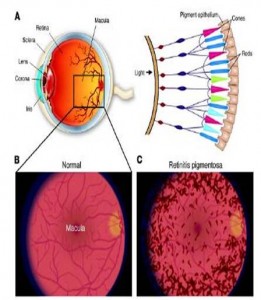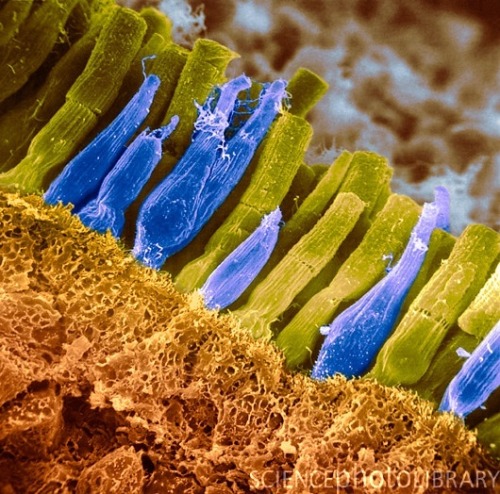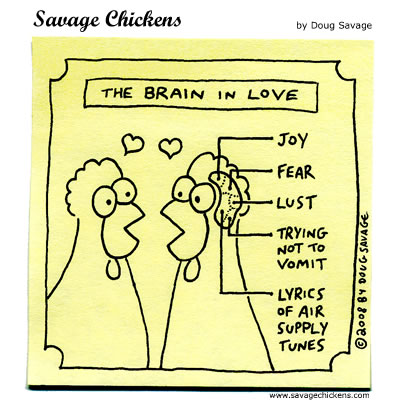Why Did You Choose to Read This?
FoxTrot by Bill Amend
The Stone (a philosophy-oriented opinion column in The New York Times) recently published two arguments related to free will. On July 22, Galen Strawson, a professor of philosophy at Reading University, presented the idea of determinism to his readers. In short, determinism is the idea that everything is causally linked to prior events. Because one cannot control the infinite influences of genetics, culture, and history, it is impossible for one to declare that one has free will. The choices that a person makes depends on an innate selection of preferences that a person already has, and that innate selection of preferences also depends on another set of preferences, and so the sequence regresses. Strawson agrees that this “reality” about the universe does not change anybody’s opinion about free will and one’s responsibility felt towards one’s actions (he includes himself as an ultimate disbeliever), but simply believing free will is real does not make it so.
However, the Stone published an opposing argument on July 25th – a mere three days later. Before readers could wrap their minds around Strawson’s theory about free will, William Egginton, a professor at Johns Hopkins University, presented the fact that free will is at the forefront of everyone’s lives. Egginton explains that humans have a tendency to explore beyond what their senses can understand. This trait is good since we as a species have grown to understand more about our surroundings, but this quality also leads to projection and sensationalism among us. People are quick to make assumptions and draw conclusions about facts presented to them. For example, the New York Times itself sensationalized a “finding” of dark matter when in reality, the “discovery” was no more important than levels of dark matter found by accident.
Egginton described an experiment where monkeys “were taught to respond to a cue by choosing to look at one of two patterns.” The computer that was hooked up to the monkeys then determined the decision the monkeys were about to make a few fractions of a second before the monkeys’ eyes looked at the pattern. The scientists declared that because the monkeys were not taking time to weigh any options, the computer could predict the decisions that the monkeys were about to make.
Egginton asks, but were the computers really able to predict such decisions? Egginton argues that these computers were not predicting decisions; they were merely presenting the neural processes that led up to the monkeys making decisions. This makes sense if one considers the processing speed of computers. They generally perform functions (especially simpler ones) faster than human brains do. One could guess that these computers also work faster than monkey brains, so the computer was just offering the processes faster than the monkey. It was not extrapolating what the monkey would do before it would do it; it was only giving a readout of what the monkey had already decided a little bit faster than the monkey itself. No decisions were technically being made by the computer for the monkey.
Egginton finishes by saying that humans have free will whether they like it or not. They are prisoners of freedom not because they can choose but because they must choose.
However, these two arguments have left me feeling dissatisfied. Although I’m a believer of free will (I love Sartre), I can’t help but think that both of these arguments sit on extreme ends. I’m assuming the editors at The New York Times wanted these arguments to be this way, so readers could make choices of their own about their free will.
My father has always told me that life is about balance. As a result, I try to rationally balance everything that I do, say, or think. I would say that a human’s ability to have free will and live freely because is a combination of determinism and free will itself. In addition to humans having a tendency towards fanaticism by projecting their knowledge onto simple facts about the universe, humans also like to categorize and rationalize things such that they make the most sense for their own lives (I’m doing it, too!).
For example, when two people are breaking up, one of the partners may say that the breakup was inevitable while the other partner says that he or she had no idea that the breakup was coming. The partner that said the breakup was inevitable would most likely say that the breakup was a sensible thing to do, while the other partner would probably say that the breakup was random and unexpected. The person who views the breakup as a surprise will most likely feel more pain and mourn the end of the relationship more than the person who saw it coming. Despite the fact that these two people are undergoing the same breakup, they rationalize the events as determined or random depending on their point of view. The way they rationalize correlates directly with the way they choose to cope with the breakup.
For some people, saying that a higher power like determinism or even God essentially makes decisions for them makes their lives easier because they don’t want to be held responsible for some of their personality traits or actions. For others, saying that they have free will and must make decisions all the time makes them feel better because they will feel like they’ve done all they could to change a situation when they fail or succeed. Many feel at peace when they “know” that their choices have made them who they are.
I can’t say that either side is right or wrong, but life must be more nuanced than either argument says it is. At times, I feel as if certain choices I have made have definitely influenced what I’ve done or why I feel one way or another about a scenario. But other times, I don’t think that anything I could have done would have changed what happened to me. Sure, if I fall down when I’m walking down some stairs, I certainly could have done something else, but why does that matter? For situations like that, I think that it doesn’t really matter if your free will did or didn’t cause that situation. It happened regardless of what caused it. That is what is most important.
We like to ruminate on how what we did affects what happened, but it seems that we need to be spending more time thinking about how what we do now will affect how we are in the future.
What do you choose?
Your Move: The Maze of Free Will – Opinionator Blog – NYTimes.com
The Limits of the Coded World – Opinionator Blog – NYTimes.com
Extra extra!!! Storm brewing in espresso shot!
The media is always hungry for juicy stories about anything. Topics of interest range from Lindsey Lohan's latest adventures to the implications of another political ethics violation. The science writers at the New York Times are no exception. Dennis Overbye confessed in an essay yesterday that some writers are so eager to report on sensational findings that they sometimes hype up their stories.
Shocking! Overbye gives an example of one such NYT article, which reported the amazing story that scientists found hints of the elusive and mysterious dark matter in a Minnesota mine. He said the article raised a hysteria, but it eventually left people disappointed when someone cared to report that the amount of dark matter found was not far above amounts found by chance. Dennis Overbye goes on to condemn the internet for spreading rumors, but he fails to note that the original hyped report on dark matter was written by him!
Perhaps our trusted science writers should do a bit more research before they publish their articles. But wait! they need the stories, and they need those stories to be catchy, damnit! Their job isn't to educate readers on the current state of whatever scientific field; their job is to report the latest findings. They more controversial they are, the better. There's a new article everyday about how exercise is good for you (or is it bad? I can't remember anymore) or how prostate or breast exams for cancer have been wrong all these years (don't worry - they'll turn out to be right again next week). No wonder Americans are confused about their health.
Individual studies are great, but they have to be taken in context and have to stand the test of time. Most findings in basic science research are small; it's the knowledge collected over many experiments and years that gives us a big picture of any one field. So the next time you read about "a new study," take it with a critical grain of salt.
Engineering the Blind to See
Vision is one of the most impressive functions of the human brain. It interprets nothing but electromagnetic waves and paints a glorious picture of our daily existence from the scattered chaotic sea of intertwining light waves that we call home. Many see their vision deteriorate and the world blur as time goes on and these problems can be corrected by optometry, but blindness comes on like a relentless infidel for more than two million people worldwide in the form of retinitis pigmentosa (RP). RP is a heritible genetic disorder that leads to degeneration and loss of function in the retina's photoreceptor cells, and can lead to full blindness in a matter of years. There is no cure or treatment for RP, but new research may change that very soon.

TOP: Macroscopic human eye (left) and rod and cone cell arrangement on the retina (right). BOTTOM: Normal human retina (left) and human retina with retinitis pigmentosa (right)/(Source: Medical-Look.com)
Vision starts in the photoreceptor when light activates rhodopsin, a G-protein coupled receptor pigment consisting of light sensitive opsin and retinal. Light triggers a conformational change in retinal that kick starts a G-coupled visual cascade and the flow of visual information to the brain. In retinitis pigmentosa, rhodopsins in the photoreceptors become insensitive to light starting in the rod cells, and blindness sets in gradually. Rod cells are used in low light and deteriorate first, leading to night blindness, and dysfunction in cone cells used for color vision and acuity sets in until full blindness plagues the individual. Fortunately, a team of French scientists has investigated this degradation and has found a way to combat it by reactivating the photoreceptor cells through genetics. Their study was featured in the July 23rd issue of Science.

Artificially colored micrograph image of retinal rods (yellow-green) and cones (blue). (Credit: Science Photo Library @ sciencephoto.com)
The scientists isolated an achaebacterial rhodopsin analog called halorhodopsin that functions in the yellow and green wavelength range. They then introduced a halorhodopsin encoding gene into retinitis pigmentosa model mice via a viral vector and also created a control group. In their experiments, it was found that both slow and fast degrading retinal cells in the experimental mice regained their light sensitivity in response to integration of halorhodopsin into their insensitive photoreceptor cells. Electrical responses were recorded from ganglion cells (the third tier cell in the visual cascade) and healthy photoreceptor spikes were observed in response to light stimulation. Most importantly, lateral inhibition (the mechanism by which the brain discriminates edges of objects) was fully preserved, while mono-directional movement was retained. Halorhodopsin mice also performed significantly better than the control RP mice in a battery of visually guided tasks, demonstrating that their photoreceptors had been successfully resensitized by halorhodopsin integration. The scientists also tested the resensitizing ability of halorhodopsin on cultured human retinal cells. They were successful in integrating halorhodopsin into human cells via viral vectors, but could not conduct any clinical trials. However, photoreceptors expressing halorhodopsin demonstrated photocurrents and photovoltages that would be adequate to restore human vision.

Theoretical device that allows a halorhodopsin treated patient to see by projecting patterned light onto the eyes derived from camera input. (Credit: Y. Greenman/Science)
This opens the door to treatment of retinitis pigmentosa in the genes - the same place where it starts. Although halorhodopsin therapy will not fully restore all wavelengths in human vision, it can still serve as a tool to bring restore vision in the blind through optical devices. For example, an RP patient could be treated with halorhodopsin gene thearpy, then outfitted with a device that images the visual field and translates it into halorhodopsin recognizable wavelengths. This light mosaic is then projected onto the patient's eyes and the can "see" what is in front of them. The supplied image of the device is from a perspective article in the beginning of the current issue of Science.
View the full text Science article here (HTML) or here (PDF) and the perspective piece about the article here. Be sure to discuss in the comments!
Sources:
Seeing the Light of Day - Science (Perspective)
Genetic Reactivation of Cone Photoreceptors Restores Responses in Retinitis Pigmentosa - Science (Research Article)
In Love With Love
Whether from real life, opera, books, or pop songs, we are all familiar with the act of falling in love. We have, perhaps, laughed at those who perform nonsensical or self-destructive acts in the name of love not even requited. It’s no wonder it’s been called insanity or even a disease. Neuroscientists at Stony Brook University are elucidating the chemistry of Cupid’s poisoned arrowhead.

A recent study published in The Journal of Neurophysiology indicates that the feeling of love, and the person who elicits it, activate brain areas similar to that of drug addicts. The feeling also triggers dopamine release related to motivation and reward. It seems that love is a goal-oriented motivation instead of merely a feeling.
A study conducted at Stony Brook University included 15 heterosexual female and male individuals who had recently broken up with a loved one but claimed to still be deeply “in love” with that person. They experienced what they described as constant pain and anguish, and they were particularly miserable when reminded of that person. The anguish bears many similarities to withdrawal. Extreme behaviors such as suicide, stalking, and homicide represent extreme cases of seeking recompense for the lost addictive object; these behaviors mimic those exemplified in of cocaine addicts. Furthermore, stimuli reminiscent of the lost lover, such as photos, exacerbate a craving similar to that of addicts longing for a return of their opiate.
The fMRIs possibly confirmed what was qualitatively observed. Participants were first shown a photo of the loved one, then asked to complete a math exercise to distract them, and then finally shown a picture of a neutral individual. Several significant areas lit up further when shown the picture of the loved one as opposed to the neutral individual. One of the areas more strongly activated was the ventral-tegmental area in the midbrain, which controls motivation and reward, and has been continuously correlated with feelings of romantic love. Other areas were the nucleus accumbens and orbitofrontal/prefrontal cortex, areas both associated with craving and addiction, particularly the dopaminergic reward system activated in cocaine addiction. Also activated were the insular cortex and anterior cingulate, centers involved in physical pain and distress.
Concerning the study, Dr. Arthur Aron states that “it shows that intense romantic love seems to function much like an addiction… But that does not tell us one way or the other whether the desire to be in love in general is an addiction.” However, it seems likely to me, that so long as we are drawn to the pleasurable, we can develop an addiction to it. Many of us have witnessed, I’m sure, certain individuals tending toward frequent infatuation or crushing. Those who seem to be in love with love.
Dr. Aron believes the study will not only bring insight into the enigma that is love, but help to treat those with addiction later. The study also brought consolation to its participants, revealing the aphorism “time heals all wounds” to be scientifically warranted. As time passed, an area of the brain associated with attachment, known as the right ventral putamen/pallidum, reacted less and less over time to a photo of the loved one.
Love, of course, is a many faceted diamond. Infatuation is but one of its angles, though it is the most sparkly and attractive, and it is usually what first catches the eye. Relationships involve an intricacy of emotions and motivations that are never static. However, the study seems to illustrate a truth concerning the self’s pleasure or reward that defines one of the key aspects of this poetic feeling.
Anguish of Rejection May Be Linked to Stimulation of Areas of Brain Related to Motivation, Reward and Addiction - ScienceDaily
Reward, Addiction, and Emotion Regulation Systems Associated With Rejection in Love - Journal of Neurophysiology